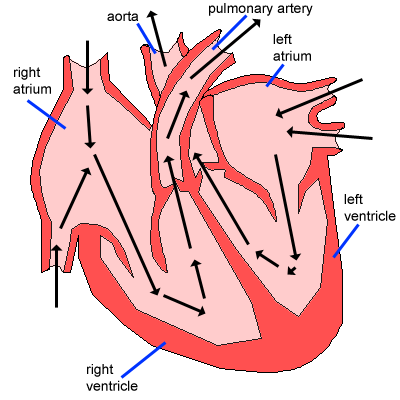Inter-relationships and functions of the circulatory system:
- Oxygen and nutrients in the blood need to be pumped around the body by the heart.
- De-oxygenated blood needs to be pumped to the lungs to be re-oxygenated.
- Waste products need to be taken to sites such as the kidney and liver (for example) to be disposed of.
- The circulatory system is also a transport system for cells (such as immune cells), and proteins.

The right side of the heart receives blood from the body and pumps this blood (via the pulmonary artery) to the lungs, maintaining the pulmonary circulation. The left side of the heart receives blood from the lungs and pumps it to the rest of the body, maintaining the systemic circulation.
The atria receive blood, and the ventricles eject it.
Blood is ejected under high pressure into arteries, which branch and distribute blood into tissues via thin walled capillaries. Blood flow through capillaries is regulated by arterioles that can be opened and closed.
Blood from capillaries is collected by venules which lead into small, then larger veins. The largest veins return blood to the heart.
The structure of the heart, and blood vessels has a common structural plan.